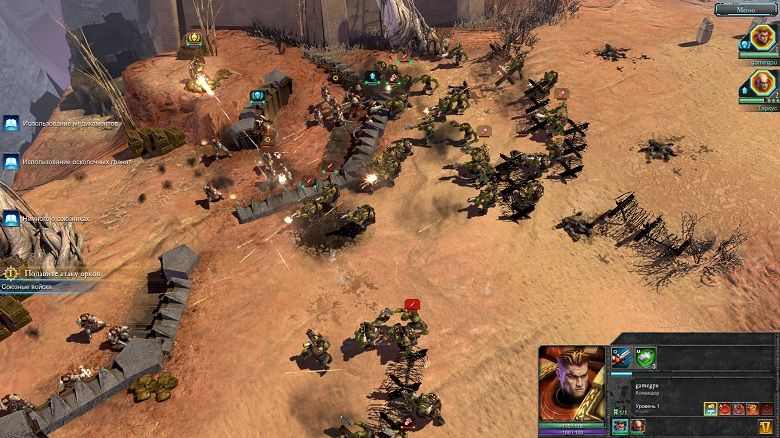

The multiplayer gameplay in Dawn of War 2 (the multiplayer is completely different from the single-player) gives the player a starting base which consists of a headquarters and a single defense turret. The base-building was minimal, but the construction of defense structures and some key base structures was still a strong aspect of the game. Resource management aside, Company of Heroes' general gameplay progression still owed a lot to the typical real-time strategy formula.

What Relic has essentially done for the multiplayer portions of Dawn of War 2 - even more so than they did with Company of Heroes - is to bring the intensity of a good match of Battlefield to the real-time strategy genre a game I experienced last night actually had my two allies and I come back to win a match after being beaten from 400-some points down to four points. This is, no doubt, a game mode that any player of multiplayer first-person shooter games over recent years is familiar with in particular, the primary game mode of the entire Battlefield series. It's a geographical tug-of-war where players shift from one thoughtfully-placed point of interest to another. Relic's next game, Company of Heroes, took this design methodology one step further and made the source of all resources a capturable point on the game map that had to be claimed and then, in some cases, enhanced through the construction of a building atop the point.ĭawn of War 2 makes resource "gathering" such an integral portion of the game that, moreso than Company of Heroes, multiplayer matches are a constant struggle for each team to keep both its resources points and the capture points which govern the fate of each teams' "ticket" - whoever has the least number of these capture points will see a slow reduction in their team's ticket count and the first team to reach zero loses. There were, however, constructable power nodes that players had to build in order to acquire power - a design mechanic that felt out of place in the scheme of the game. There were no workers to manage and not supply flow to contend with, simply a group of "hot points" that littered a game map. Once a resource point is captured the flow of a given resource was dependent on nothing else but time (and maybe an upgraded listening post on the capture point). The map designers placed several important requisition points at key locations around a game map and these capturable points were the only means of harvesting requisition. Unlike games like Warcraft, Starcraft, and Age of Empires, Dawn of War treated one of its two resources as a capturable commodity. Dawn of War also was the first of Relic's games that really attempted to differentiate itself from the conventions of the real-time strategy genre at the time by reducing the gameplay emphasis on resource management. The game also provided players with a lower unit count than most other strategy games released at the time while also treating infantry units as somewhat customizable squads rather than individual units. Dawn of War introduced the concept of cover as an actual game mechanic that players had to think about and plan a strategy around. Their shift in focus from a game like Homeworld to their, now, action/RTS genre blend was most apparent in Warhammer 40,000: Dawn of War (2004). Over the last few years, Relic has been crafting and evolving their very unique take on the real-time strategy genre with every new title they have released.


 0 kommentar(er)
0 kommentar(er)
